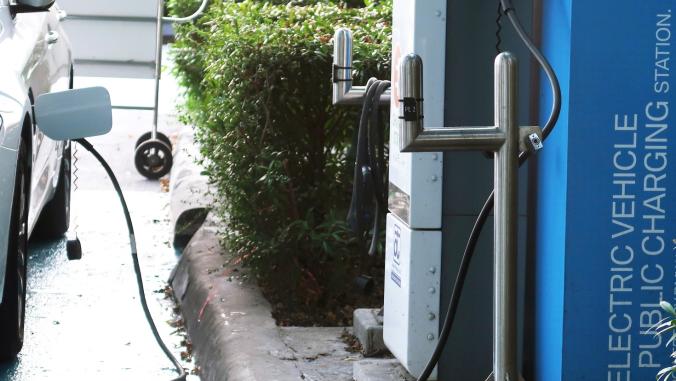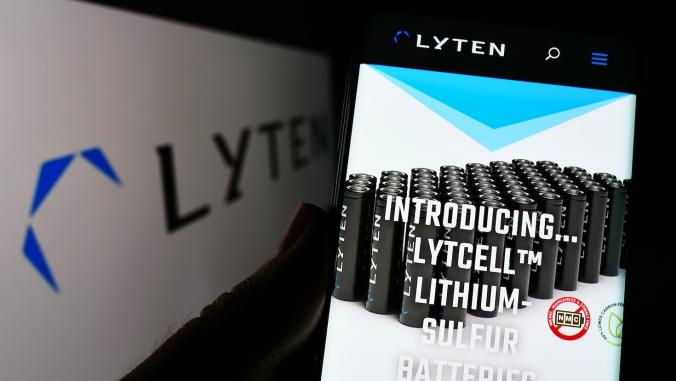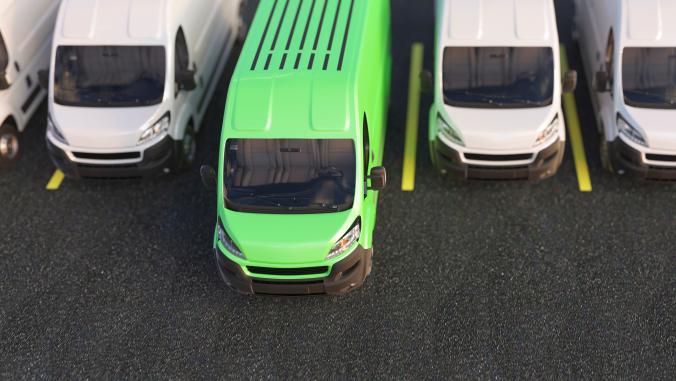5 winners and losers from California governor Jerry Brown's transportation legacy
He had 'moonshot' environmental goals, but his impact on the mobility sector was more mixed.

Now-former governor of California, Jerry Brown, at the Paris COP21, United Nations' conference on climate change.
This article is drawn from the Transport Weekly newsletter from GreenBiz, running Tuesdays.
Thank you, Jerry! And I don't mean Garcia (though thanks to him, too).
No, we're talking about indomitable Jerry Brown, California's 34th and 39th governor, and Oakland's former mayor. At age 80, he left his office Sunday, after serving out his second term (California's 40th governor, Gavin Newsom, was sworn in Monday). Brown supposedly will retire to his ranch house in Colusa County, California, but likely will be as active as ever.
Brown has left an impressive legacy of pushing California to be the leading state on fighting climate change, embracing clean energy, pushing for solar roofs and so much more. Brown personally adopted climate change as one of his signature issues (highlighted by GCAS last year) and will continue this advocacy work.
But when it comes to the state's various transportation problems, Brown's record is a little more mixed. Overall, impressive, but not everything was a slam dunk.
Why? Well, transportation — for both congestion and the sector's rising emissions — is a more intractable problem to solve than cleaning up the electricity grid or building a cap-and-trade system to use the market to curb emissions. Lowering transportation emissions will involve fundamental rethinking around many (at times at-odds) areas, from land-use planning and housing to public transportation to electric vehicle adoption incentives and mandates.
Here's a review of five of Brown's transportation projects and how successful, or unsuccessful, they were:
Gas tax: WIN
Brown got "Senate Bill 1," widely known as the gas tax (although not California's first gas tax), passed in the spring of 2017. It's set to raise about $5 billion a year for 10 years in fuel taxes and vehicle registration fees to improve roads and transportation infrastructure.
While the bill was controversial, Brown delivered his own brand of unique sausage-making to ensure its success. The funds looked as if they might be in jeopardy when Prop 6 recently put the law up for repeal. But with Brown's support, Prop 6 was defeated, and the gas tax remains.
High-speed rail: SO FAR MISS
California's high-speed rail project has been over a decade in development and is already billions over budget. But Brown took the substantial risk of continuing to push the project forward.
I personally believe California does need a much more sophisticated train system to connect north and south, but the current project has been mired in problems from the start. Will Newsom keep the plan afloat, scrap it or make an entirely new version?California's high-speed rail project has been over a decade in development and is already billions over budget. But Brown took the substantial risk of continuing to push the project forward.
5 million EV goal: DIRECTIONAL WIN
Brown's original electric vehicle goal was to get 1.5 million electric vehicles on California's roads by 2025. Currently California has a little over 500,000 EVs out there (and sold 150,000 in 2018). California has to have at least 150,000 EVs sold every year until 2025 to reach that goal. Doable.
But Brown upped his goal to 5 million EVs by 2030 earlier this year. That's a little more of a stretch. However, aggressive goals are good for helping drive action, so we applaud setting the bar high.
California's CAFE Standards: ONGOING BATTLE
For decades California has set vehicle fuel efficiency standards that are more aggressive than the rest of the country. President Barack Obama adopted these standards into federal law. The Trump administration's EPA, however, has declared that these standards are being frozen. Brown and California have pledged to fight the standards freeze. Newsom will have to take up this battle.
Autonomous vehicle rule-making: WIN
Brown has helped California become one of the most advanced states when it comes to enabling autonomous vehicles to drive on its roads. The state requires companies provide ongoing monthly data, and now driverless cars don't even need backup drivers.
In addition, the state also released forward-looking guidelines to try to ensure that robocars will be deployed sustainably and efficiently.




